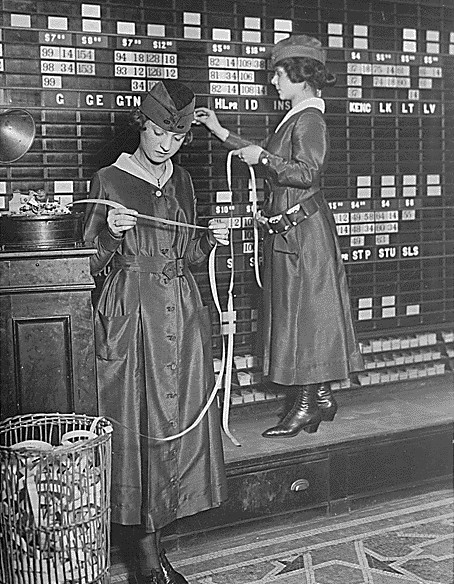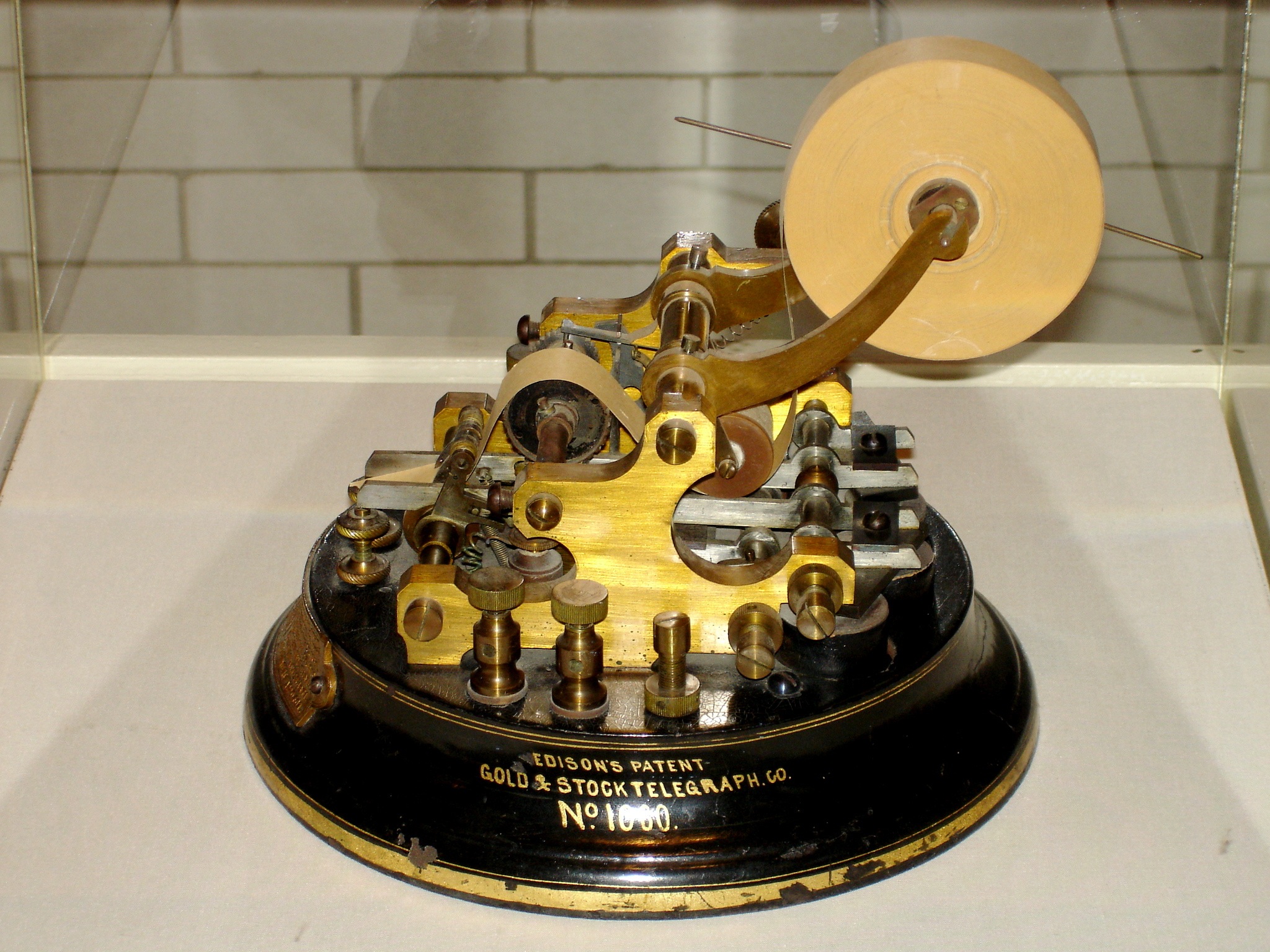|
Supermontage
SuperMontage, abbreviated simply as SM, is an integrated trading system used in American stock exchange NASDAQ that was implemented in 2002. It features a fully integrated public limit order book and market maker quotations, the ability to enter multiple quotes Quote is a hypernym of quotation, as the repetition or copy of a prior statement or thought. Quotation marks are punctuation marks that indicate a quotation. Both ''quotation'' and ''quotation marks'' are sometimes abbreviated as "quote(s)". ..., anonymous ordering, five-level-deep buy and sell interest, and time-stamps on individual orders. Test stock symbols The SM system generally works behind the scenes, but on rare occasions it can be seen at work when a test symbol such as "ZVZZT" runs across the ticker. NASDAQ strongly encourages firms to utilize test securities for testing their production systems. References Nasdaq {{finance-stub ... [...More Info...] [...Related Items...] OR: [Wikipedia] [Google] [Baidu] |
NASDAQ
The Nasdaq Stock Market () (National Association of Securities Dealers Automated Quotations Stock Market) is an American stock exchange based in New York City. It is the most active stock trading venue in the US by volume, and ranked second on the list of stock exchanges by market capitalization of shares traded, behind the New York Stock Exchange. The exchange platform is owned by Nasdaq, Inc., which also owns the Nasdaq Nordic stock market network and several U.S.-based stock and options exchanges. History 1971–2000 "Nasdaq" was initially an acronym for the National Association of Securities Dealers Automated Quotations. It was founded in 1971 by the National Association of Securities Dealers (NASD), now known as the Financial Industry Regulatory Authority (FINRA). On February 8, 1971, the Nasdaq stock market began operations as the world's first electronic stock market. At first, it was merely a "quotation system" and did not provide a way to perform electronic trade ... [...More Info...] [...Related Items...] OR: [Wikipedia] [Google] [Baidu] |
Algorithmic Trading
Algorithmic trading is a method of executing orders using automated pre-programmed trading instructions accounting for variables such as time, price, and volume. This type of trading attempts to leverage the speed and computational resources of computers relative to human traders. In the twenty-first century, algorithmic trading has been gaining traction with both retail and institutional traders. It is widely used by investment banks, pension funds, mutual funds, and hedge funds that may need to spread out the execution of a larger order or perform trades too fast for human traders to react to. A study in 2019 showed that around 92% of trading in the Forex market was performed by trading algorithms rather than humans. The term algorithmic trading is often used synonymously with automated trading system. These encompass a variety of trading strategies, some of which are based on formulas and results from mathematical finance, and often rely on specialized software. Examples o ... [...More Info...] [...Related Items...] OR: [Wikipedia] [Google] [Baidu] |
Stock Exchange
A stock exchange, securities exchange, or bourse is an exchange where stockbrokers and traders can buy and sell securities, such as shares of stock, bonds and other financial instruments. Stock exchanges may also provide facilities for the issue and redemption of such securities and instruments and capital events including the payment of income and dividends. Securities traded on a stock exchange include stock issued by listed companies, unit trusts, derivatives, pooled investment products and bonds. Stock exchanges often function as "continuous auction" markets with buyers and sellers consummating transactions via open outcry at a central location such as the floor of the exchange or by using an electronic trading platform. To be able to trade a security on a certain stock exchange, the security must be listed there. Usually, there is a central location for record keeping, but trade is increasingly less linked to a physical place as modern markets use electronic communic ... [...More Info...] [...Related Items...] OR: [Wikipedia] [Google] [Baidu] |
Order Book (trading)
An order book is the list of orders (manual or electronic) that a trading venue (in particular stock exchanges) uses to record the interest of buyers and sellers in a particular financial instrument. A matching engine uses the book to determine which orders can be fully or partially executed. Order book in securities trading In securities trading, an order book contains the list of buy orders and the list of sell orders. For each entry it must keep among others, some means of identifying the party (even if this identification is obscured, as in a dark pool), the number of securities and the price that the buyer or seller are bidding/asking for the particular security. Price levels When several orders contain the same price, they are referred as a price level, meaning that if, say, a bid comes at that price level, all the sell orders on that price level could potentially fulfill that. Crossed book When the order book is part of a matching engine, orders are matched as the ... [...More Info...] [...Related Items...] OR: [Wikipedia] [Google] [Baidu] |
Market Maker
A market maker or liquidity provider is a company or an individual that quotes both a buy and a sell price in a tradable asset held in inventory, hoping to make a profit on the ''bid–ask spread'', or ''turn.'' The benefit to the firm is that it makes money from doing so; the benefit to the market is that this helps limit price variation ( volatility) by setting a limited trading price range for the assets being traded. In U.S. markets, the U.S. Securities and Exchange Commission defines a "market maker" as a firm that stands ready to buy and sell stock on a regular and continuous basis at a publicly quoted price. A Designated Primary Market Maker (DPM) is a specialized market maker approved by an exchange to guarantee that they will take a position in a particular assigned security, option, or option index. In currency exchange Most foreign exchange trading firms are market makers, as are many banks. The foreign exchange market maker both buys foreign currency from clients and ... [...More Info...] [...Related Items...] OR: [Wikipedia] [Google] [Baidu] |
Stock Quote
Ticker tape was the earliest electrical dedicated financial communications medium, transmitting stock price information over telegraph lines, in use from around 1870 through 1970. It consisted of a paper strip that ran through a machine called a stock ticker, which printed abbreviated company names as alphabetic symbols followed by numeric stock transaction price and volume information. The term "ticker" came from the sound made by the machine as it printed. The ticker tape revolutionized financial markets, as it relayed information from trading floors continuously and simultaneously across geographical distances. Paper ticker tape became obsolete in the 1960s, as television and computers were increasingly used to transmit financial information. The concept of the stock ticker lives on, however, in the scrolling electronic tickers seen on brokerage walls and on news and financial television channels. Ticker tape stock price telegraphs were invented in 1867 by Edward A. Calahan, ... [...More Info...] [...Related Items...] OR: [Wikipedia] [Google] [Baidu] |
Timestamp
A timestamp is a sequence of characters or encoded information identifying when a certain event occurred, usually giving date and time of day, sometimes accurate to a small fraction of a second. Timestamps do not have to be based on some absolute notion of time, however. They can have any epoch, can be relative to any arbitrary time, such as the power-on time of a system, or to some arbitrary time in the past. The term "timestamp" derives from rubber stamps used in offices to stamp the current date, and sometimes time, in ink on paper documents, to record when the document was received. Common examples of this type of timestamp are a postmark on a letter or the "in" and "out" times on a time card. In modern times usage of the term has expanded to refer to digital date and time information attached to digital data. For example, computer files contain timestamps that tell when the file was last modified, and digital cameras add timestamps to the pictures they take, recording th ... [...More Info...] [...Related Items...] OR: [Wikipedia] [Google] [Baidu] |
Stock (finance)
In finance, stock (also capital stock) consists of all the Share (finance), shares by which ownership of a corporation or company is divided.Longman Business English Dictionary: "stock - ''especially AmE'' one of the shares into which ownership of a company is divided, or these shares considered together" "When a company issues shares or stocks ''especially AmE'', it makes them available for people to buy for the first time." (Especially in American English, the word "stocks" is also used to refer to shares.) A single share of the stock means fractional ownership of the corporation in proportion to the total number of shares. This typically entitles the shareholder (stockholder) to that fraction of the company's earnings, proceeds from liquidation of assets (after discharge of all Seniority (financial), senior claims such as secured and unsecured debt), or voting power, often dividing these up in proportion to the amount of money each stockholder has invested. Not all stock i ... [...More Info...] [...Related Items...] OR: [Wikipedia] [Google] [Baidu] |
Stock Ticker
Ticker tape was the earliest electrical dedicated financial communications medium, transmitting stock price information over telegraph lines, in use from around 1870 through 1970. It consisted of a paper strip that ran through a machine called a stock ticker, which printed abbreviated company names as alphabetic symbols followed by numeric stock transaction price and volume information. The term "ticker" came from the sound made by the machine as it printed. The ticker tape revolutionized financial markets, as it relayed information from trading floors continuously and simultaneously across geographical distances. Paper ticker tape became obsolete in the 1960s, as television and computers were increasingly used to transmit financial information. The concept of the stock ticker lives on, however, in the scrolling electronic tickers seen on brokerage walls and on news and financial television channels. Ticker tape stock price telegraphs were invented in 1867 by Edward A. Calahan, ... [...More Info...] [...Related Items...] OR: [Wikipedia] [Google] [Baidu] |


.jpg)



